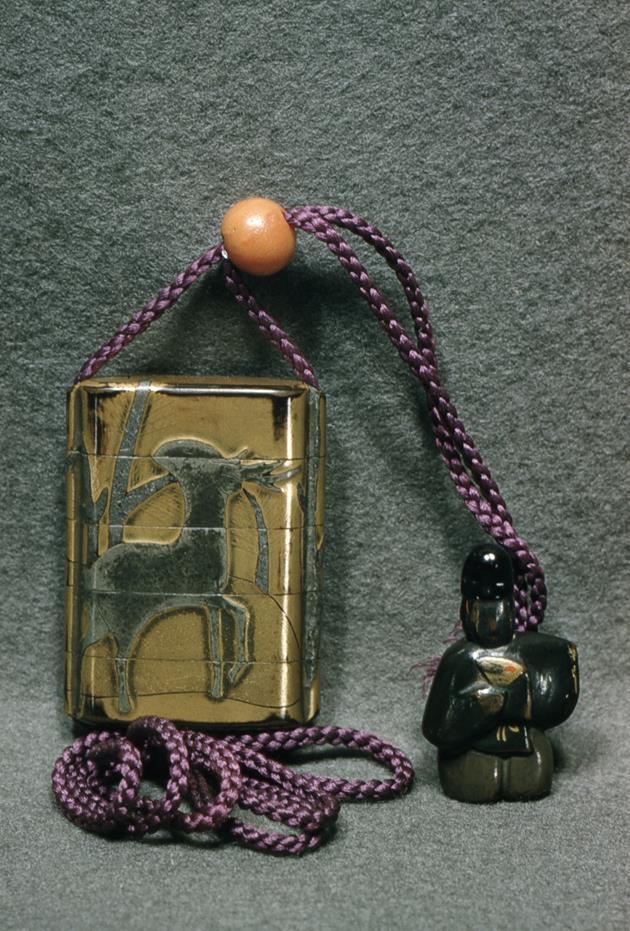Inro, Ojime and Netsuke
18th century
In early modern Japan, men suspended small containers (inrō) for carrying personal items (such as herbs and seals) over the sashes of their robes using a toggle (netsuke) connected by silk cords held by a fastener (ojime). All these items were made of a diversity of materials, were often elaborately carved and decorated, and offered the wearer an opportunity for self-expression. Inrō were commonly commissioned and might feature designs made or inspired by leading artists of the day.
Although this inrо̄ is unsigned and unattributed, its design is informed by pictures of the Rinpa school of artists, a loose affiliation of painters and other artists that can be traced back to the early 1600s
Case (inro): Wood, lacquer, gold, and lead or pewter inlay; Fastener (ojime): Dyed nut; Toggle (netsuke): Wood, lacquer, gold
1 7/8 x 1 1/8 x 5/8 in. (4.76 x 2.86 x 1.59 cm)
Thomas D. Stimson Memorial Collection
52.133
Provenance: Thomas D. Stimson; Seattle Art Museum, Seattle, Washington, 1952

